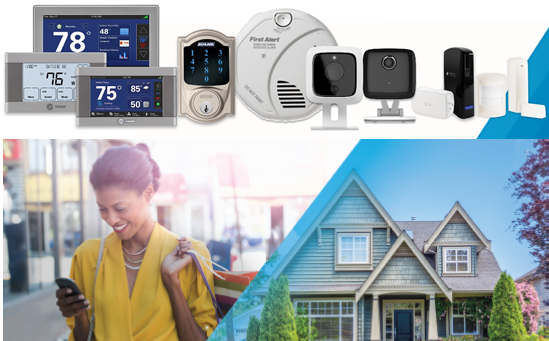Smart homes are poised to be the next big thing, but there’s a lot of confusion as builders and buyers alike are inundated with gadgets that can be hard to install, difficult to integrate, confusing to operate – and ultimately turn out to not be so smart after all.
It leaves a lot of people wondering: Why bother? And that’s too bad because living in a truly smart home can be a revolutionary experience that changes daily habits, saves energy, enhances security and really does make life easier.
There are good reasons for builders to lead the way in smart home adoption – in much the same way they have driven other advances such as central heating and air or advanced building materials. Smart home systems maximize the inherent efficiency advantages of new homes by giving homeowners unmatched control over thermostats, lighting and other household devices from anywhere in the world via an easy-to-use smartphone app.
Unlike energy-efficient features that may be invisible to new homebuyers, a smart home system can easily communicate the technologically advanced living that is only possible in a new home. A home whose HVAC, locks and lighting can be controlled from a unified smartphone app – or even by voice integration – can help differentiate builders’ products from one another and from resale homes.
But doing it right requires experience. The smart home space is expanding rapidly with a lot of new entrants – few of which have the experience or scale to accommodate large national or regional building operations. One example of an experienced provider is Nexia, a brand of Ingersoll Rand, the trusted maker of Trane heating and air conditioning systems. As a smart home pioneer since 2008, Nexia has worked out the operational issues confronting many of the newer and less experienced smart home companies.
For example, because the Nexia system is wireless and easily expandable, installation of components can be done by tradespeople as part of the normal course of construction. A base system provides substantial perceived value to buyers who might not otherwise choose a smart home upgrade. A Nexia starter system can be included in a home for less than $300 and provide homebuyers a comprehensive system they can then easily expand to fit their lifestyles at their own pace. Expansion is easy because the wireless in-home network allows homeowners to add and control hundreds of devices from all major categories of devices such as thermostats, lighting, locks, garage doors, sensors, irrigation, appliances, video cameras, solar panels, and motorized blinds.
So when someone asks why they should bother with smart home technology, the answer should be that if it’s a bother, you’re doing it wrong. Choose a smart home system that can be easy, effective, reliable and highly desirable.
For more information visit http://www.nexiahome.com/.
